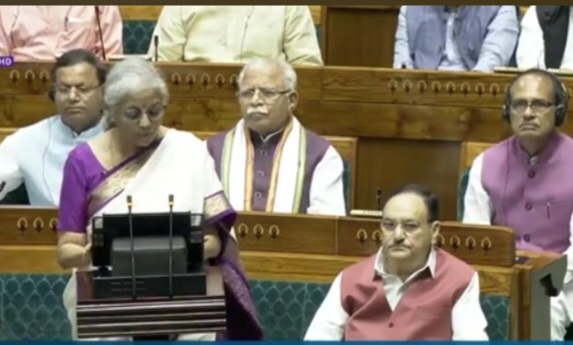Nirmala Sitharaman's Budget: Ambitious Plans, But much will depend how the states take it and replicate them on the ground zero. Implementation Is Crucial
Union Finance Minister Nirmala Sitharaman's budget presented in Parliament today outlines bold plans to revamp agriculture and employment sectors. But the success of these initiatives depends on effective execution.
The reaction to the budget of NDA.3 has come on the expected lines. Industries and its chambers have lapped it up. The left-backed organisations have slammed it terming it corporate-focused and anti-farmers.
But when we go by the intent of the speech of .Sitharaman, here is what she aspires to accomplish for the NDA.3.0 government.
Agriculture: Boosting Productivity and Resilience
The government will release 109 high-yield, climate-resilient crop varieties to enhance agricultural productivity. We do not know what is instored for the horticulture sector of Himalayan states.
One million farmers will be trained in natural farming over the next two years, with certification and branding support. Much will depend how the opposition ruled states will do it.
To achieve self-sufficiency in pulses and oilseeds, the budget aims to improve production, storage, and marketing of crops like mustard, groundnut, and soybean. But none of these crops are grown on large scale in the Himalayan states.
New vegetable production clusters will be set up near major markets, with support for cooperatives and startups.
A digital push will include a crop survey in 400 districts, covering 6 crore farmers.
This will enable the issuance of Jan Samarth-based Kisan Credit Cards in five states.
Additionally, financial support for shrimp production and export will be provided through NABARD, focusing on breeding centers for shrimp. These schemes have no implications for the Himalayan states.
Employment and Skilling: New Incentives
Three new schemes will support formal employment:
- First-Time Employees: Receive one month’s wage up to ₹15,000.
- Manufacturing Sector: Incentives for additional employment, benefiting both employees and employers.
- General Employment: Employers will be reimbursed up to ₹3,000 per month for hiring additional staff.
To increase women’s workforce participation, working women’s hostels and creches will be established, along with women-specific skilling programs.
A new skilling scheme will train 20 lakh youth over five years, upgrading 1,000 Industrial Training Institutes with industry-relevant courses.
The revised skill loan scheme will offer up to ₹7.5 lakh in loans, aiding 25,000 students annually. Financial support for higher education loans up to ₹10 lakh will also be provided. These schemes have implications in mountain states.
Challenges and the Road Ahead
The budget’s success depends on how well these plans are executed. Ensuring that benefits reach small farmers and first-time employees is crucial.
The effectiveness of digital infrastructure in agriculture needs careful monitoring to avoid excluding those without tech access.
Employment schemes must be easy to access, and efforts to boost women’s participation should address deeper cultural and social barriers.
Sitharaman’ says the budget sets a clear path toward a resilient and self-sufficient India.







